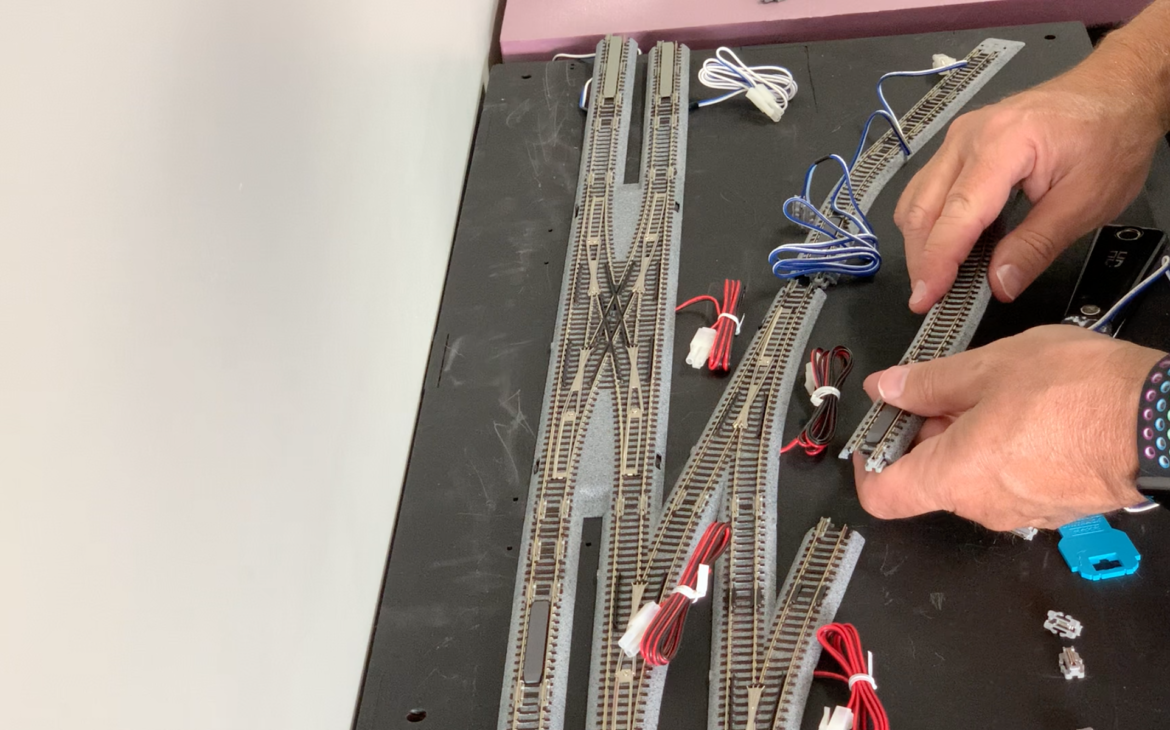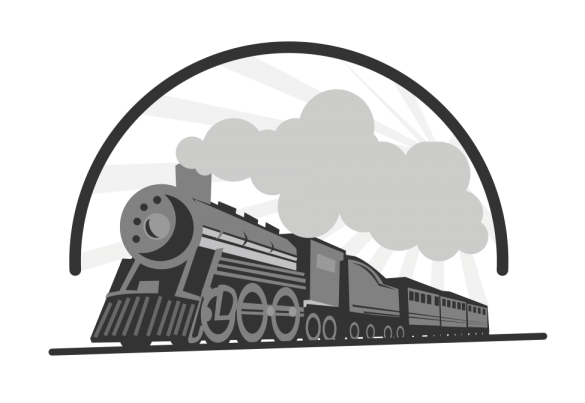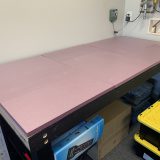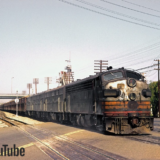The T-Trak Component
As I’ve explained previously, the main layout is a table top project. There are many ways to build a layout, but I felt it would be important to set some limitations. This is not only to contain costs, but so that the project could actually be completed in a realistic period of time.
At the same time, I kept thinking about the many, many options for locations, industries, and purposes for railroading in 1970. I’d love to create a diesel servicing facility that still had an old turntable and/or roundhouse. I would really like to create an industrial area related to lumber, or oil. Building a module with multiple warehouses that receive raw materials and distribute final products sounds good. I’d also love to create a passenger station, bustling with people and activity. Did I mention how much fun it would be to model the central valley of California, where fruits and vegetables are picked and put into refrigerated rail cars for delivery to points east?
Not easy to do all of that in a 36-inch by 78-inch table top. However, that adds to the challenge. Can it be done? Should it be done? Will it be fun?
Then, while working on the design of the tabletop, I had an epiphany. There IS a way to build all of those great ideas and to have a table top layout as well. The answer is T-trak.

The design of the Fallen Flags Junction includes end of layout specifications that match up with T-rack modules. That means that there are T-trak connecting points (either end of both Los Angeles and Portland) where T-trak modules could be connected.
Although it hasn’t yet been put to the test, I LOVE the idea. It means the options for operation and modeling are nearly endless. And, it all still fits in a specific, semi-portable, environment.
T-Trak has some technical challenges for a layout like this, mostly related to electrical polarity, but I’ll share how we overcome that issue as well. The standards set forth by T-Trak are what make the possibility of creating a series of modules that connect to the main layout such a solid opportunity.
The initial T-trak module will represent a section of Los Angeles, and it will also contain a programming track for DCC purposes. After that, who knows what might be developed?
See? That’s why I’m really excited about this style of layout development and operation.



